Teresa Krzemien
ORIGINS
A lake in the evening, for instance Goplo. Bonfires, people in animal skins and linen dance in a pageant in front of the kinsfolk. There is a dialogue – questions and answers. Somebody raises hands in a ritual gesture. Maybe the hands hold an animal scull, a bunch of corn ears, a rowan or willow tree twig – a sacred plant with the Slavs?
Could it have been like that? It could. Our own equivalent of antique theatre. These fairy tale hypotheses of the ancient past of theatre in our part of the Slav territory are as justified as any others. But certainly a ritual, a gesture, a ceremony constituted the foundation. As everywhere else. And the witnesses of that ceremony – the actively participating audience.
The next stage must have been historically recorded theatre connected with the arrival of Christianity in these lands. Quem queritis? Who are you looking for? Jesum Nasarenum. An Easter dialogue at the Christ Tomb at the churches. This dialogue kept developing and got more conventional. Soon there were presented whole spectacles at the Tombs, so called Visitations (Visitationes).
And so there was, like in all Christian Europe, liturgical theatre, and then mysteries. It was religious in nature, aiming at lifting up hearts and souls. Already in the 14th century, with urban development, theatre partly leaves the temples and becomes present in the streets. It would absorb the street atmosphere and would adopt plebeian topics and contents.
Religious education developed by the Piarists and later on the Jesuits would produce also a by-product: Latin scholarly theatre. It made quaint remarks to the antique past. But there are also contemporary examples: Poland of late Piasts and Jagiellonians (13-14th century) was visited by travelling troupes of jugglers, mimes, troubadours, dancers, story tellers, clowns from the West. A strictly plebeian, street theatre began to develop vigorously. It would gradually flourish with stories of Albertus, ribald interludes, acted in town squares on market days. And it went on like that for years, Polish language full of sibilants, in the streets and Latin in churches and schools. There was more and more Polish, especially in later mysteries. But it was all fleeting, repeated in stories, distorted. Old Polish theatre found its firm ground only with the arrival of a written dramatic script.
In 1580, a Pauline, Mikolaj of Wilkowiecko published a text of a mystery – “A Story of Glorious Resurrection of Our Lord” – in a Cracow printing house. That short story begins after Christ’s funeral and ends with his appearance to the apostles. Contemporary directors stage it today, polishing it and playing with the text. Were there any older mystery texts? Maybe so, but that one is the only survivor. One fact is unquestionable: mysteries kept on getting more secular with time. They adopted elements of everyday life, very vivid and direct. Saints behaved like ordinary people, they had their quirks. Almost everybody could become a protagonist, even animals were granted personality.
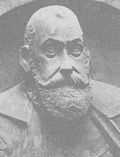 Humanists, well educated in Italian universities, dusted off ideas and principles of antiquity theatre: both Greek and Roman. Rhetoric, a particular form of articulation, „higher emotions” – as we would say today – take precedence as the performance manner in the new type of theatre, rooted mainly at the feudal manors and the royal court. Everything developed simultaneously and in a syncretic way. Any periodisation is established nowadays – post factum. Latin liturgical theatre, Polish mysteries, Latin humanism, Polish street theatre and finally Polish humanist theatre all happend together. It is worthwhile to recall here the name of Jan Kochanowski of Czarnolas and his play „The Dismissal of the Grecian Envoys” which marks the beginning of Polish drama. It was written to be performed at the wedding of Jan Zamoyski with a daughter of magnate Radziwill. At the performance, which took place at the Jazdow castle in Warsaw, on January 12, 1578 king Stefan Batory was present. That date opens the era of court theatre. Its further emanation – royal theatre – is important here since it finaly gave raise to national theatre. Performance of Italian, German, French, and English actors at the royal court had been well documented since 1510 – the reign of Sigismund I of the Jagiellonian dynasty. The first true theatre hall was built at the Royal Castle by Wladyslaw IV Vasa for the Italian theatre group. In l7th century Englishmen appeared, while the Polish kings of the Saxon dynasty brought French actors to Poland. („Seventeen trunks with costumes are on their way from Paris in 1700”, the chronicler wrote). August II Strong of the same Saxon dynasty built the so called Operalnia, the first theatre building in the capital in 1748. The Radziwills established a permanent ballet ensemble at their property in Sluck. They educated and adapted young serfs to the artistic profession. The Rzewuski family established their own theatre.
Humanists, well educated in Italian universities, dusted off ideas and principles of antiquity theatre: both Greek and Roman. Rhetoric, a particular form of articulation, „higher emotions” – as we would say today – take precedence as the performance manner in the new type of theatre, rooted mainly at the feudal manors and the royal court. Everything developed simultaneously and in a syncretic way. Any periodisation is established nowadays – post factum. Latin liturgical theatre, Polish mysteries, Latin humanism, Polish street theatre and finally Polish humanist theatre all happend together. It is worthwhile to recall here the name of Jan Kochanowski of Czarnolas and his play „The Dismissal of the Grecian Envoys” which marks the beginning of Polish drama. It was written to be performed at the wedding of Jan Zamoyski with a daughter of magnate Radziwill. At the performance, which took place at the Jazdow castle in Warsaw, on January 12, 1578 king Stefan Batory was present. That date opens the era of court theatre. Its further emanation – royal theatre – is important here since it finaly gave raise to national theatre. Performance of Italian, German, French, and English actors at the royal court had been well documented since 1510 – the reign of Sigismund I of the Jagiellonian dynasty. The first true theatre hall was built at the Royal Castle by Wladyslaw IV Vasa for the Italian theatre group. In l7th century Englishmen appeared, while the Polish kings of the Saxon dynasty brought French actors to Poland. („Seventeen trunks with costumes are on their way from Paris in 1700”, the chronicler wrote). August II Strong of the same Saxon dynasty built the so called Operalnia, the first theatre building in the capital in 1748. The Radziwills established a permanent ballet ensemble at their property in Sluck. They educated and adapted young serfs to the artistic profession. The Rzewuski family established their own theatre.
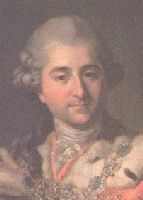 However, it was the King Stanislaus theatre that unified the art with the nation’s life. It introduced Polish identity and patriotic duty into the cultural sphere, thus helping to infuse national identity with elements of entertainment. Elected in December 1764 king of Poland – it turned out the last one – Stanislaus Augustus Poniatowski, erudite, European intellectual and art protector, a true man of Enlightenment, . established the first Polish public theatre in 1765 and called it the National Theatre. Financial support was secured, the troupe was made up of former Jesuit Collegium students and people full of fantasy and imagination. The king commissioned the inauguration play from Jozef Bielawski, who wrote a comedy entitled “Interlopers”. The first night took place on November 19, 1765. It was the beginning of modern, public theatre in Poland.
However, it was the King Stanislaus theatre that unified the art with the nation’s life. It introduced Polish identity and patriotic duty into the cultural sphere, thus helping to infuse national identity with elements of entertainment. Elected in December 1764 king of Poland – it turned out the last one – Stanislaus Augustus Poniatowski, erudite, European intellectual and art protector, a true man of Enlightenment, . established the first Polish public theatre in 1765 and called it the National Theatre. Financial support was secured, the troupe was made up of former Jesuit Collegium students and people full of fantasy and imagination. The king commissioned the inauguration play from Jozef Bielawski, who wrote a comedy entitled “Interlopers”. The first night took place on November 19, 1765. It was the beginning of modern, public theatre in Poland.
Many of the first plays were remakes from the French originals adapted to the Polish needs and conditions. The needs were very clearly defined. The Enlightenment alliance supporting the king in his attempts to approach Europe and further the reforms used theatre as the propaganda tool. That had continuing effects for the future of Polish theatre – it would always try to apply its achievements to the ideals of national service.
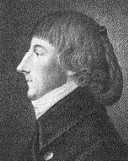 The head and entrepreneur of the National theatre, its director, and its main actor and text producer was Wojciech Boguslawski later recognised as the Founding Father of Polish Theatre. Fateful turns of fortune took him out of Warsaw and then brought him back again. Poland lost her independence but his and the King’s work had survived. In the last moments of independence of the I Republic, when the Four-Year-Long Sejm was in session (1788 -1792) attempting to save the country with a set of systemic reforms (in 1791, on May 3 the first in Europe and second in the world democratic and modern constitution was promulgated) the role of theatre was hard to overrate. And it performed it with a great success. On January 15, 1791 the theatre moved Warsaw with the premiere of the first original Polish comedy which had direct political ramifications. It was „The Return of the Envoy” by
The head and entrepreneur of the National theatre, its director, and its main actor and text producer was Wojciech Boguslawski later recognised as the Founding Father of Polish Theatre. Fateful turns of fortune took him out of Warsaw and then brought him back again. Poland lost her independence but his and the King’s work had survived. In the last moments of independence of the I Republic, when the Four-Year-Long Sejm was in session (1788 -1792) attempting to save the country with a set of systemic reforms (in 1791, on May 3 the first in Europe and second in the world democratic and modern constitution was promulgated) the role of theatre was hard to overrate. And it performed it with a great success. On January 15, 1791 the theatre moved Warsaw with the premiere of the first original Polish comedy which had direct political ramifications. It was „The Return of the Envoy” by 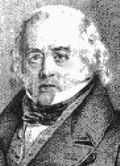 Julian Ursyn Niemcewicz – the confrontation of the Sejm patriotic alliance with the opposition of old order of traditional nobility (liberum veto). At that time the theatre staged performances one after another. There was already the first indigenous opera „Poverty Uplifted” by Franciszek Bohomolec with music by Maciej Kamienski, remade by Wojciech Boguslawski. After the second partition of Poland social mood became more radical. The brunt of the ire turned against the occupiers, especially Russia. At the acme of revolutionary turmoil on March 1, 1794 the National Theatre staged a musical play „Alleged Miracle or Cracovians and Highlanders” by Wojciech Boguslawski to the music of Jan Stefani. It was the apology of freedom and our folk. The whole Warsaw picked the tunes up immediately and sang them in the streets. After three performances the Tsarist ambassador took the play off the stage, and several weeks later the theatre was closed. On March 24 the insurrection led by Tadeusz Kosciuszko broke out. Later Poland was shrouded in the darkness of the partitions. But theatre, though impoverished, still emerged from the ashes. And the nation, the public, still remembered the chorus from the Cracovians and Highlanders: „Where freedom is absent, there’s no joy there, a chained dog howls, people cry for freedom”. That desire has been shared by modern Polish theatre until today. In good and bad.
Julian Ursyn Niemcewicz – the confrontation of the Sejm patriotic alliance with the opposition of old order of traditional nobility (liberum veto). At that time the theatre staged performances one after another. There was already the first indigenous opera „Poverty Uplifted” by Franciszek Bohomolec with music by Maciej Kamienski, remade by Wojciech Boguslawski. After the second partition of Poland social mood became more radical. The brunt of the ire turned against the occupiers, especially Russia. At the acme of revolutionary turmoil on March 1, 1794 the National Theatre staged a musical play „Alleged Miracle or Cracovians and Highlanders” by Wojciech Boguslawski to the music of Jan Stefani. It was the apology of freedom and our folk. The whole Warsaw picked the tunes up immediately and sang them in the streets. After three performances the Tsarist ambassador took the play off the stage, and several weeks later the theatre was closed. On March 24 the insurrection led by Tadeusz Kosciuszko broke out. Later Poland was shrouded in the darkness of the partitions. But theatre, though impoverished, still emerged from the ashes. And the nation, the public, still remembered the chorus from the Cracovians and Highlanders: „Where freedom is absent, there’s no joy there, a chained dog howls, people cry for freedom”. That desire has been shared by modern Polish theatre until today. In good and bad.
In Poland partitioned by Austria, Prussia and Russia theatres developed according to the pattern of fashions and aesthetic doctrines which were en vogue in Europe at that time. Thus first came: French classicism, comedies and tragedies by Corneille, Racine, and Moliere acted in the early l9th century style, Italian opera buffa, and the whole comedy production of the lesser kind. The art of directing improved continuously. Heralds appeared of a new trend in art, the one which would elevate Polish literature and theatre to the highest standards and mark it with originality – Romanticism. The originality completely forgotten, unfortunately, in the European scale. Friedrich Schiller, Victor Hugo, Lord Byron, Alexander Pushkin, Mikhail Lermontov – great romanticists who made huge contributions to the treasury of European art and philosophy. They initiated the pre-existential turn over towards human personality, both intellectual and emotional. They all have been recognized, analyzed and staged. And rightly so.
 Poles, however, introduced an element of struggle for national identity and freedom. They had also started a metaphysical argument about the soul, the system of values and the meaning of life, non-existent in the work of their Western colleagues. That is Polish differentia specifica. Adam Mickiewicz, Juliusz Slowacki, Zygmunt Count Krasinski, and their epigone, a Cracow poet, Stanislaw Wyspianski, living in the belle epoque, created a canon of Romantic theatre and drama that has remained astonishing with the poignancy of doubts and questions it poses, even one and a half century later. Those questions were restated again only by existentialism. „The Forefathers Eve” by Mickiewicz, „Kordian” by Slowacki, „Undivine Comedy” by Krasinski, „November Night” by Wyspianski – those are sacred dramas for Polish theatre but, unfortunately, absent in the world history of ideas. Written in Polish in order to be read, typical Lesedramae, were in their onset condemned to be forgotten and are to be recovered again.There is no exaggeration in the statement that Polish Romantic drama is the best thing that Polish theatre has to offer. Just pursuant to that it is mandatory to mention the comedies by Alexander Count Fredro. Created in roughly the same period (the first half of 19th century), Fredro’s comedies have been staged until today. They constitute a wonderful example of Old Polish language. They offer laughter as a remedy to poor personal, social and national standing. They try to cure with humour the same wound that was seriously discussed by the Romantics – the loss of independence by Poland, after unsuccessful although heroic insurrections of 1794, 1831, and in the case of the post- romantic Wyspianski, of the one in 1863. All of three were aimed militarily, emotionally, and mentally against the worst enemy – Russia. What Fredro tried to tame with wit, the Romantics put on the edge: to fight or not to fight, to cooperate or to boycott, to endure or to perish. Naturally under each occupier the situation of theatre as well as the citizens was different. In the Prussian zone stages showed the same repertoire as in Berlin plus Polish comedies. In the Russian zone theatre followed the fashion and prioritized stardom. Generously supported by Russian administration Warsaw Government Theatres promoted such stars as later on America-famous Modrzejewska (Modjeska), Trapszo, Zoltowski, Rapacki. In Galicia, under the Austrian rule, i.e. in Cracow and Lvov, in the atmosphere of relaxation and relative autonomy, innovation was more evident. In the beginning of the present century we happened to have creative director- managers Tadeusz Pawlikowski, Ludwik Solski, Jozef Kotarbinski. They promoted a theatre that was committed, ambitious and often experimental. It showed first class entertainment but with national overtones. Cracow-born Secessionist poet (in Poland that period was called Young Poland) Stanislaw Wyspianski created nationally important, post-romantic pieces. His „The Wedding”, „Liberation”, „November Night” established a poetic canon investigating Polish national character – but also the universal one. That art is intended for everybody, rich in human types presented in a very perceptive and suggestive way. Life in thraldom is often sweetened with uncontroversial entertainment. Hence the success of melodramas, comedies and operetta repertoire in the theatres.
Poles, however, introduced an element of struggle for national identity and freedom. They had also started a metaphysical argument about the soul, the system of values and the meaning of life, non-existent in the work of their Western colleagues. That is Polish differentia specifica. Adam Mickiewicz, Juliusz Slowacki, Zygmunt Count Krasinski, and their epigone, a Cracow poet, Stanislaw Wyspianski, living in the belle epoque, created a canon of Romantic theatre and drama that has remained astonishing with the poignancy of doubts and questions it poses, even one and a half century later. Those questions were restated again only by existentialism. „The Forefathers Eve” by Mickiewicz, „Kordian” by Slowacki, „Undivine Comedy” by Krasinski, „November Night” by Wyspianski – those are sacred dramas for Polish theatre but, unfortunately, absent in the world history of ideas. Written in Polish in order to be read, typical Lesedramae, were in their onset condemned to be forgotten and are to be recovered again.There is no exaggeration in the statement that Polish Romantic drama is the best thing that Polish theatre has to offer. Just pursuant to that it is mandatory to mention the comedies by Alexander Count Fredro. Created in roughly the same period (the first half of 19th century), Fredro’s comedies have been staged until today. They constitute a wonderful example of Old Polish language. They offer laughter as a remedy to poor personal, social and national standing. They try to cure with humour the same wound that was seriously discussed by the Romantics – the loss of independence by Poland, after unsuccessful although heroic insurrections of 1794, 1831, and in the case of the post- romantic Wyspianski, of the one in 1863. All of three were aimed militarily, emotionally, and mentally against the worst enemy – Russia. What Fredro tried to tame with wit, the Romantics put on the edge: to fight or not to fight, to cooperate or to boycott, to endure or to perish. Naturally under each occupier the situation of theatre as well as the citizens was different. In the Prussian zone stages showed the same repertoire as in Berlin plus Polish comedies. In the Russian zone theatre followed the fashion and prioritized stardom. Generously supported by Russian administration Warsaw Government Theatres promoted such stars as later on America-famous Modrzejewska (Modjeska), Trapszo, Zoltowski, Rapacki. In Galicia, under the Austrian rule, i.e. in Cracow and Lvov, in the atmosphere of relaxation and relative autonomy, innovation was more evident. In the beginning of the present century we happened to have creative director- managers Tadeusz Pawlikowski, Ludwik Solski, Jozef Kotarbinski. They promoted a theatre that was committed, ambitious and often experimental. It showed first class entertainment but with national overtones. Cracow-born Secessionist poet (in Poland that period was called Young Poland) Stanislaw Wyspianski created nationally important, post-romantic pieces. His „The Wedding”, „Liberation”, „November Night” established a poetic canon investigating Polish national character – but also the universal one. That art is intended for everybody, rich in human types presented in a very perceptive and suggestive way. Life in thraldom is often sweetened with uncontroversial entertainment. Hence the success of melodramas, comedies and operetta repertoire in the theatres.
Divas, ballerinas, lovers – and great Romantic plays – that was the Polish theatre’s stock in 1919, the year of Polish independence. Reborn Poland again set difficult social tasks for the actors and authors to wake up social solidarity, to create modern personnel and theoretical foundations of servile theatre. The state was organized anew, theatre was organised, too; a self governing body of the theatre artists was established – Union of Polish Stage Artists (ZASP).
 New doctrines, facilities and ideas were launched and tested. Juliusz Osterwa established his Reduta (Redoubt), a team of self-perfecting artists, cherishing the ideals of a community in service of art and ethics. Great actors: Stefan Jaracz, above mentioned Julisz Osterwa, Maria Przybylko-Potocka, Jozef Wegrzyn, Jan Kurnakowicz, Boleslaw Leszczynski; Dobieslaw Damiecki – true verists or visionaries – they fixed the national – visionary – realist type of theatre. It was addressed to the discerning viewer but also to everybody. There appeared avant-garde surrealist dramas (Pure Form) of Stanislaw Igancy Witkiewicz (Witkacy) whom the Polish and world theatre discovered only after his death in the World War II. The „Cobblers”, „Guybal Wahazar”, „Dainty Shapes and Hairy Apes”, „Miss Ttutli-Puttli”. A new name appeared in literature, which would matter a lot in a few years time not only in the Polish theatre but also the world one – Witold Gombrowicz. The year 1939, September, outbreak of World War II put an abrupt end to the laboriously constructed normality. Witkacy committed suicide on Sept. 17 when Russians entered Poland – fightling the Nazis – from the East. Gombrowicz – who went to Argentina in August, never returned to Poland. The country fought the occupier and struggled for survival, and so theatre which went underground. A special Secret Council for Theatre was established, led by a theatrologist and director Bohdan Korzeniowski. The concepts of post-war theatre development had been worked out at that time as well as the ethical code of the profession. Post-war reality changed those plans to some degree.
New doctrines, facilities and ideas were launched and tested. Juliusz Osterwa established his Reduta (Redoubt), a team of self-perfecting artists, cherishing the ideals of a community in service of art and ethics. Great actors: Stefan Jaracz, above mentioned Julisz Osterwa, Maria Przybylko-Potocka, Jozef Wegrzyn, Jan Kurnakowicz, Boleslaw Leszczynski; Dobieslaw Damiecki – true verists or visionaries – they fixed the national – visionary – realist type of theatre. It was addressed to the discerning viewer but also to everybody. There appeared avant-garde surrealist dramas (Pure Form) of Stanislaw Igancy Witkiewicz (Witkacy) whom the Polish and world theatre discovered only after his death in the World War II. The „Cobblers”, „Guybal Wahazar”, „Dainty Shapes and Hairy Apes”, „Miss Ttutli-Puttli”. A new name appeared in literature, which would matter a lot in a few years time not only in the Polish theatre but also the world one – Witold Gombrowicz. The year 1939, September, outbreak of World War II put an abrupt end to the laboriously constructed normality. Witkacy committed suicide on Sept. 17 when Russians entered Poland – fightling the Nazis – from the East. Gombrowicz – who went to Argentina in August, never returned to Poland. The country fought the occupier and struggled for survival, and so theatre which went underground. A special Secret Council for Theatre was established, led by a theatrologist and director Bohdan Korzeniowski. The concepts of post-war theatre development had been worked out at that time as well as the ethical code of the profession. Post-war reality changed those plans to some degree.
 In 1946 Polish theatre found itself in a position of licensed culture: subsidized and protected but within limits of censored obedience, both thematically and formally. That corset of official art doctrine which was obligatory in the socialist camp was jerked at and loosened continuously. That in the communist period Polish theatre flourished in many different ways happened partly as a result of the strategy of hitting a head against the wall of censorship and partly due to the spirit of contrariness and panache. A multitude of ideas, myths, schools, styles, trends, ensembles and realisations was born in that period earning the label of brilliance. We see the effects of that in the world today: Polish theatre is an export product. Those names testify to it: Kantor, Tomaszewski, Grotowski, Mrozek, Gombrowicz, Witkacy, The Theatre of the Eighth Day (Teatr Osmego Dnia), The Theatre of the Hundred (Teatr Stu), Wierszalin, Gardzienice.
In 1946 Polish theatre found itself in a position of licensed culture: subsidized and protected but within limits of censored obedience, both thematically and formally. That corset of official art doctrine which was obligatory in the socialist camp was jerked at and loosened continuously. That in the communist period Polish theatre flourished in many different ways happened partly as a result of the strategy of hitting a head against the wall of censorship and partly due to the spirit of contrariness and panache. A multitude of ideas, myths, schools, styles, trends, ensembles and realisations was born in that period earning the label of brilliance. We see the effects of that in the world today: Polish theatre is an export product. Those names testify to it: Kantor, Tomaszewski, Grotowski, Mrozek, Gombrowicz, Witkacy, The Theatre of the Eighth Day (Teatr Osmego Dnia), The Theatre of the Hundred (Teatr Stu), Wierszalin, Gardzienice.
Here are then a few words on the luminaries of the contemporary Polish specificity.
STUDENT THEATRES
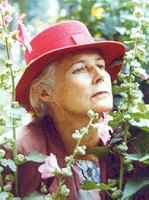 They appeared in Poland as a cultural phenomenon twice. For the first time in the late 1950s and early 1960s (Bim-Bom Theatre in Gdansk, STS – Student Satirical Theatre in Warsaw), when they introduced freshness of perception, enthusiasm exceeding the straightjacket of existing norms, humour, relaxed attitude, youth, colour and beauty. Agnieszka Osiecka (future author of Polish best song lyrics, poet and writer, recently deceased), Andrzej Jarecki of the STS, Zbyszek Cybulski (future film idol, often called Polish James Dean and cult figure), Bogumil Kobiela, actor, a great comic talent, both of the Bim-Bom – that is just a handful of names. The second time student theatre appeared in the early 1970s
They appeared in Poland as a cultural phenomenon twice. For the first time in the late 1950s and early 1960s (Bim-Bom Theatre in Gdansk, STS – Student Satirical Theatre in Warsaw), when they introduced freshness of perception, enthusiasm exceeding the straightjacket of existing norms, humour, relaxed attitude, youth, colour and beauty. Agnieszka Osiecka (future author of Polish best song lyrics, poet and writer, recently deceased), Andrzej Jarecki of the STS, Zbyszek Cybulski (future film idol, often called Polish James Dean and cult figure), Bogumil Kobiela, actor, a great comic talent, both of the Bim-Bom – that is just a handful of names. The second time student theatre appeared in the early 1970s 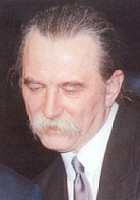 (77 Theatre in Lodz The Pun [Kalambur] from Wroclaw, The Theatre of the Hundred from Cracow, The Eighth Day from Poznan). Four exemplary names characteristic of the milieu are respectively: Zdzislaw Hejduk, Boguslaw Litwiniec, Krzysztof Jasinski, Lech Raczak. That second coming was a clear contest to the system, its structures and political situation. And at the same time an obvious demonstration of artistic identity and a separate artistic programme. The „Falling” performance in December 1970 (77 Theatre in Lodz) predicted the tragic events of December the same year.
(77 Theatre in Lodz The Pun [Kalambur] from Wroclaw, The Theatre of the Hundred from Cracow, The Eighth Day from Poznan). Four exemplary names characteristic of the milieu are respectively: Zdzislaw Hejduk, Boguslaw Litwiniec, Krzysztof Jasinski, Lech Raczak. That second coming was a clear contest to the system, its structures and political situation. And at the same time an obvious demonstration of artistic identity and a separate artistic programme. The „Falling” performance in December 1970 (77 Theatre in Lodz) predicted the tragic events of December the same year.
Student theatre in Poland became the manifestation of the young generation, active contestation and artistic experimentation without artificiality and professional stage pretence. Future avant-garde and alternative theatre had its roots there. It used new forms of expression. From that movement today’s theatres awarded in Edinburgh and Nancy festivals such as KANA from Szczecin, Wierszalin of Bialystok and Gardzienice of Lublin originated. The latter one existing as a sort of theatre communes, sending their fresh and amateur signals to the audience. The Eighth Day Theatre from Poznan settled in Italy is experimenting with formal aspects. In Poland it was a political centre first of all. Others, such as The Theatre of the Hundred, The Pun, became professional stages. They produce regular performances, some better some worse.
TADEUSZ KANTOR THEATRE
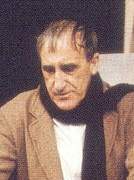 Kantor, the guru of Polish theatre. He is an artist known all over the world. He was recognized as one of the greatest artists of the 20th century while he was alive, and he was almost canonized after his death. A painter, stage setter, director and father of Cricot 2, a theatre drawing on the ideas of the avant-garde theatre centre of 1933-39 (Cricot – a theatre of painters). Closely linked with Cracow, he experimented with Witkacy „Sepia”, „In a Small Manor”, „Dainty Shapes and HairyApes” until he found his own style and contents: a theatre of death. The „Dead Class”, a performance filmed by Andrzej Wajda in 1976, which was inspired by works of Witkacy, Gombrowicz, and Schulz was a masterpiece on the subject of our passing away. „Wielopole, Wielopole” a theatrical tribute paid to Kantor’s family memories and home town has already conquered the world. Kantor had many
Kantor, the guru of Polish theatre. He is an artist known all over the world. He was recognized as one of the greatest artists of the 20th century while he was alive, and he was almost canonized after his death. A painter, stage setter, director and father of Cricot 2, a theatre drawing on the ideas of the avant-garde theatre centre of 1933-39 (Cricot – a theatre of painters). Closely linked with Cracow, he experimented with Witkacy „Sepia”, „In a Small Manor”, „Dainty Shapes and HairyApes” until he found his own style and contents: a theatre of death. The „Dead Class”, a performance filmed by Andrzej Wajda in 1976, which was inspired by works of Witkacy, Gombrowicz, and Schulz was a masterpiece on the subject of our passing away. „Wielopole, Wielopole” a theatrical tribute paid to Kantor’s family memories and home town has already conquered the world. Kantor had many
supporters abroad, who were generous and tolerant (he was a so called capricious artist), and it took months to produce a new performance: „May Artists Perish”, „I’ll never come back here”, and the last one, „Today is My Birthday”. He has left his archive in Cracow, the famous Cricoteca located at the Kanonicza Street. His work has incorporated an object (a famous Kantor’s chair) as an artistic subject: An Object which is an Actor. He was present, most of the time, at the stage as a demiurge-director producing a mood of multi-layered paradoxical unequivocality. Kantor’s work lived as long as he was alive. His performances expressed total reality, the sum total of meanings created from the new distribution of accents, props, calques and memory lapses. The power of expression of that theatre was enormous as weli as the number of fans. Death, nothingness, everydayness, the experience of maturity – Kantor defined all that anew. And he added something else to it. All his expressive syntheses pinpointed that part of the world from where the artist had come from: Central Europe. That piece of land that so many wars, apparently senseless, had been fought about. Kantor’s Galicia was almost palpable: multiethnic, multicultural, tolerant and just the opposite. He did not live to see the war in Bosnia, the disintegration of Yugoslavia, the release of Balkan jinns. But he had anticipated all that. A Pole whose black garment and a long black scarf were known all over the world. He was interested in art solely, his own art – and he created synthesis. For years the Master, he had no followers.
JERZY GROTOWSKI THEATRE
Also a guru, maybe even more so. Also well known all over the world. Contrary to Kantor he has had followers, a school, students, fans, a theory, a doctrine and his own devoted milieu. He has inspired many outstanding directors – they learned with him and from him. He was a master with a small group of faithful. He lived abroad for years in a theatre commune. Only last year he appeared in public and lectures in College de France in Paris.
He began in Cracow as a traditionally educated director (he graduated in Moscow) of a regular kind. Soon after, however, he started to experiment with the audience: he wanted to eliminate the division between the stage and the audience. He created a Theatre of 13 Rows in Opole. He dreamed of full participation of the audience in the performance so that it could fully identify with the literary subject. Finally he proposed to establish an austere theatre. 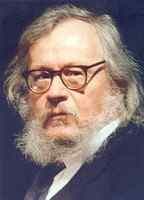 He moved to Wroclaw where he established his Laboratorium Theatre. In it he developed a theory and practice of form reduction through bringing it back, as it was in the beginning – to the ritual. „Apocalypsis cum figuris” of 1968 provided an opportunity to experience an act of sacrifice, it broke off with acting. In 1970 Jerzy Grotowski went to India, then to China. His theatre became sort of psychotherapeutic religion, however strange that sounds today. He provided internships for the initiated. He tried to reach for the Theatre of Origins. He found shelter in Italian Pontedera.
He moved to Wroclaw where he established his Laboratorium Theatre. In it he developed a theory and practice of form reduction through bringing it back, as it was in the beginning – to the ritual. „Apocalypsis cum figuris” of 1968 provided an opportunity to experience an act of sacrifice, it broke off with acting. In 1970 Jerzy Grotowski went to India, then to China. His theatre became sort of psychotherapeutic religion, however strange that sounds today. He provided internships for the initiated. He tried to reach for the Theatre of Origins. He found shelter in Italian Pontedera.
After Grotowski it is impossible not to appreciate the value and agility of the human body in the theatre and its sacredness. In that sense he has changed the theatre. He inculcated the idea of the uniqueness of the act of theatrical initiation.
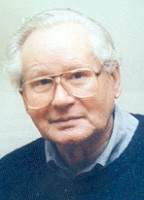 HENRYK TOMASZEWSKI THEATRE
HENRYK TOMASZEWSKI THEATRE
Its full name is: Wroclaw Theatre of the Pantomime. Its creator, choreographer and dancer, had left the ballet in order to renew the body language. He created very serious performances often very abstract, philosophical and sophisticated. ( „Gilgamesh”, „Faustus Departure”, „Hamlet – irony and mourning”, „Prodigal Son”).
JOZEF SZAJNA THEATRE
Philosophical and artistic theatre. Obsessive investigation of the author’s experiences of the last war (Auschwitz concentration camp). Here also objects 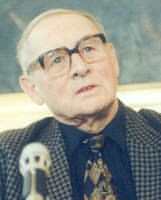 become actors, but those objects speak instead of people whom Szajna generally does not want to hear. Vision and imagination of the director are the most important. His performances stage the representations of his artistic provocations. Civilisation of the Fall, the era of crematoria, nightmares: that is the essence of „Replica”, the performance which has seen many autoreplicas since its first staging in 1973. Jozef Szajna, an outstanding scenographer, creator of schools and the STUDIO stage in Warsaw belongs to the elite guild of 20th century artists. He is very well known in the world for his universal language of artistic sign and violent movement. (… I removed the actor’s face but added personality… that is image and movement).
become actors, but those objects speak instead of people whom Szajna generally does not want to hear. Vision and imagination of the director are the most important. His performances stage the representations of his artistic provocations. Civilisation of the Fall, the era of crematoria, nightmares: that is the essence of „Replica”, the performance which has seen many autoreplicas since its first staging in 1973. Jozef Szajna, an outstanding scenographer, creator of schools and the STUDIO stage in Warsaw belongs to the elite guild of 20th century artists. He is very well known in the world for his universal language of artistic sign and violent movement. (… I removed the actor’s face but added personality… that is image and movement).
 SLAWOMIR MROZEK THEATRE
SLAWOMIR MROZEK THEATRE
Actually there are dramas, plays but so exquisite theatrically, ready to play, poignant – that it is a complete theatre. Mrozek is a contemporary author who since the 1960s has been involved in discovery of mechanisms of social behaviour. A former emigre who has recently come back to Poland. Since his genial „Tango „(1964), staged in many theatres of the world, he has been an uncrowned king of Polish play-wrighting. For strangers – a discoverer of problems, seriousness and beauty of the country, which is located East of the West and West of the East.
Moreover… moreover everything in Polish theatre life looks more or less normal. There are over sixty dramatic theatres, over six thousand actors, six theatre schools. All of them – except for two or three – are subsidised: either by the state or by local governments. The repertoire that is on stage  prioritises small cast plays – because they are cheaper. There are several excellent directors, a few dozen excellent actors. It is not possible to name them all, so here are a few examples: Jerzy Grzegorzewski (artistic director of the dramatic stage at the National Theatre), Kazimierz Dejmek, Maciej Englert, Krystian Lupa, Jerzy Jarocki, Erwin Axer – directors. And Gustaw Holoubek, Andrzej Lapicki, Jan Nowicki, Teresa Budzisz-Krzyzanowska, Anna Dymna and Anna Polony, Krystyna Janda, and Zbigniew Zamachowski – actors. The Old Theatre in Cracow, Polish Theatre in Wroclaw, Contemporary Theatre, National Theatre, Powszechny Theatre, Polish and Athenaeum Theatres in Warsaw. Private musical Buffo Theatre by Janusz Jozefowicz and many small stages and alternative centres all over Poland. The public is always active, and the majority of it is young. With all that we are waiting for a new impulse, or even for a revolution, aesthetic and intellectual. And maybe even – emotional? Since it was always like that: theatre was important in Poland when it bit with a heart, fought for imponderabilia and mocked without mercy. As Witkacy and Mrozek.
prioritises small cast plays – because they are cheaper. There are several excellent directors, a few dozen excellent actors. It is not possible to name them all, so here are a few examples: Jerzy Grzegorzewski (artistic director of the dramatic stage at the National Theatre), Kazimierz Dejmek, Maciej Englert, Krystian Lupa, Jerzy Jarocki, Erwin Axer – directors. And Gustaw Holoubek, Andrzej Lapicki, Jan Nowicki, Teresa Budzisz-Krzyzanowska, Anna Dymna and Anna Polony, Krystyna Janda, and Zbigniew Zamachowski – actors. The Old Theatre in Cracow, Polish Theatre in Wroclaw, Contemporary Theatre, National Theatre, Powszechny Theatre, Polish and Athenaeum Theatres in Warsaw. Private musical Buffo Theatre by Janusz Jozefowicz and many small stages and alternative centres all over Poland. The public is always active, and the majority of it is young. With all that we are waiting for a new impulse, or even for a revolution, aesthetic and intellectual. And maybe even – emotional? Since it was always like that: theatre was important in Poland when it bit with a heart, fought for imponderabilia and mocked without mercy. As Witkacy and Mrozek.
We must all enjoy it and suffer from it.
Translated by Marek Szopski
Owocowe gry na pieniądze takie jak legalny slot Magic Fruits mają swój początek w mechanicznych automatach hazardowych. Pierwszy taki automat powstał w połowie XIX wieku i posiadał symbole kart – A, K, D, J, itd. Wkrótce potem w pubach i saloonach na Dzikim Zachodzie zaczęły pojawiać się maszyny jednoręki bandyta z symbolami owoców. Ponieważ nie istniały jeszcze prawdziwe legalne kasyna online ani kasyna stacjonarne z krwi i kości, fani hazardu mogli normalnie korzystać z nich w miejscach publicznych. Właściciele obchodzili prawo zakazujące hazardu, wręczając nagrodę w postaci gumy do żucia o smaku wiśni, cytryn czy malin (często pod stołem przekazując graczowi nagrodę w postaci gotówki). Dziś każdy operator kasyna online w rodzaju National Casino bonus posiada w lobby mnóstwo gier nawiązujących do tego właśnie okresu. Na wielu z nich wciąż znajdziemy symbole owoców. W krajach anglosaskich do dziś automaty na pieniądze nazywa się „owocówkami” (fruit machines). Podobnie w Polsce.